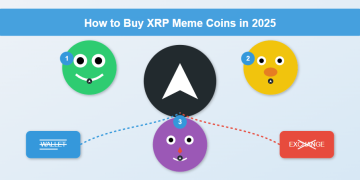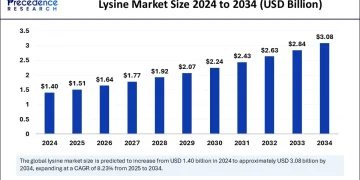In today’s complex business landscape, the efficient management of governance, risk, and compliance (GRC) has become paramount for organizations seeking sustainable growth and compliance with regulations. One integral aspect of this process is the utilization of GRC software solutions to streamline operations and enhance overall effectiveness.
GRC software offers a comprehensive approach to managing risks, ensuring compliance with regulatory requirements, and establishing robust governance structures. By integrating advanced GRC tools into their operations, organizations can achieve a more systematic and proactive approach to risk management.
With the increasing focus on regulatory compliance and the need for structured processes to mitigate risks, GRC software emerges as a strategic asset for organizations across various industries. These solutions not only centralize risk data but also facilitate real-time monitoring, reporting, and analysis to support informed decision-making.
By implementing best practices and leveraging GRC software effectively, organizations can enhance their risk management capabilities, foster a culture of compliance, and drive sustainable growth. Stay tuned as we delve into the best practices and strategies for streamlining risk management processes with GRC software, empowering organizations to navigate the complexities of today’s business environment with confidence and efficiency.
Understanding GRC Software and its role in risk management
Governance, Risk, and Compliance (GRC) software plays a pivotal role in modern organizations by integrating governance, risk, and compliance functions to streamline processes effectively. This software solution serves as a centralized platform that enables businesses to manage their operations efficiently while ensuring adherence to regulatory standards and internal policies.
Integration of governance, risk, and compliance
GRC software consolidates governance, risk, and compliance activities into a unified system, allowing organizations to align strategic objectives with risk management priorities seamlessly. By integrating these critical functions, businesses can establish a holistic approach to decision-making, enabling comprehensive oversight and control over potential risks and regulatory requirements.
Benefits of implementing GRC Software
Implementing GRC software offers several advantages to organizations seeking to enhance their risk management practices. One primary benefit is the ability to streamline processes and workflows, reducing manual efforts and improving operational efficiency. Moreover, GRC software provides real-time visibility into risk exposure and compliance status, enabling proactive decision-making and mitigating potential threats before they escalate.
By adopting GRC software, organizations can achieve greater transparency, accountability, and governance across all business activities. This comprehensive approach enhances risk identification, assessment, and mitigation strategies, ultimately fostering a culture of compliance and integrity within the organization.
In conclusion, GRC software serves as a robust solution for organizations looking to bolster their risk management processes by integrating governance, risk, and compliance functions seamlessly. By leveraging the benefits of GRC software, businesses can achieve operational excellence, regulatory compliance, and sustainable growth in today’s complex business landscape.
Best practices for implementing GRC Software
Implementing GRC software effectively in your organization requires strategic planning and adherence to best practices. By following recommended strategies and approaches, you can streamline your risk management processes and ensure compliance with legal and regulatory requirements. Let’s delve into the key best practices for successful implementation:
Risk assessment and prioritization
Thorough risk assessment and prioritization are foundational steps when integrating GRC software into your operations. By conducting a comprehensive risk assessment, you can identify potential threats, vulnerabilities, and opportunities that need to be addressed. Prioritizing risks allows you to focus on mitigating the most critical issues first, ensuring optimal allocation of resources and efforts. GRC software provides a structured framework for assessing risks across various business functions, enabling informed decision-making and proactive risk management strategies.
Compliance with legal and regulatory requirements
Ensuring compliance with relevant laws and regulations is paramount for organizations seeking to mitigate legal risks and uphold ethical standards. GRC software plays a crucial role in facilitating compliance by providing tools for monitoring regulatory changes, creating audit trails, and automating compliance processes. By aligning your GRC software implementation with legal requirements specific to your industry, you can enhance transparency, accountability, and governance practices within your organization. Stay updated on evolving regulations and leverage GRC software functionalities to maintain compliance while driving operational efficiency.
Incorporating these best practices into your GRC software implementation strategy can enhance your organization’s risk management capabilities and foster a culture of compliance and accountability. By leveraging the capabilities of GRC software in tandem with sound risk management practices, organizations can proactively address risks, optimize decision-making processes, and safeguard their reputation in an increasingly complex regulatory landscape.
Streamlining governance processes with GRC software
In today’s complex business environment, achieving efficient and transparent governance processes is essential for organizational success. Implementing Governance, Risk, and Compliance (GRC) software can significantly streamline governance activities, offering a centralized platform for managing various aspects of governance. Let’s delve into how GRC software transforms governance processes within organizations.
Centralization of governance activities
GRC software plays a pivotal role in centralizing governance activities, consolidating tasks related to compliance, risk management, and regulatory requirements. By integrating all governance functions into a unified platform, organizations can gain a comprehensive view of their governance landscape. This centralization not only enhances operational efficiency but also fosters transparency by providing stakeholders with real-time access to critical governance information.
Enhanced monitoring and reporting capabilities
One of the key strengths of GRC software lies in its advanced monitoring and reporting features, which empower organizations to proactively track and assess their governance performance. Through automated data collection and analysis, GRC software enables real-time monitoring of key governance metrics, alerts stakeholders to potential risks or compliance issues, and generates detailed reports for informed decision-making. These enhanced capabilities not only streamline governance processes but also contribute to a culture of continuous improvement and accountability.
By leveraging GRC software’s centralized platform and robust monitoring functionalities, organizations can fortify their governance processes, mitigate risks, and ensure compliance with evolving regulations. The seamless integration of governance activities within a comprehensive GRC framework paves the way for sustainable growth and resilience in today’s dynamic business landscape.
Ensuring effective risk mitigation with GRC Software
Risk mitigation is a crucial aspect of organizational success, especially when dealing with complex regulatory environments and evolving threats. Implementing Governance, Risk, and Compliance (GRC) software can significantly enhance an organization’s ability to effectively manage risks. By leveraging GRC software tools and functionalities, organizations can streamline their risk management processes and ensure compliance with regulations.
Proactive risk management strategies
One of the key advantages of utilizing GRC software is the facilitation of proactive risk management strategies. Rather than reacting to risks as they arise, organizations can proactively identify potential threats and implement preemptive measures to mitigate them. Through automated risk assessments, real-time monitoring, and customizable risk frameworks, GRC software empowers businesses to stay ahead of emerging risks and enhance their overall risk management posture.
Continuous improvement through data analysis
Data analysis plays a pivotal role in driving continuous improvement in risk mitigation efforts with GRC software. By collecting and analyzing vast amounts of data from various sources, organizations can gain valuable insights into their risk landscape. This data-driven approach enables proactive decision-making, trend identification, and the ability to fine-tune risk mitigation strategies over time. Through analytics tools integrated into GRC software, organizations can optimize their risk management processes and enhance their risk mitigation capabilities.
In conclusion, organizations that need structured processes for managing governance, risk management, and compliance requirements can benefit greatly from leveraging GRC software. By embracing proactive risk management strategies and harnessing the power of data analysis, businesses can effectively mitigate risks, ensure regulatory compliance, and safeguard their operations in an ever-changing business landscape.
Conclusion
Streamlining risk management processes through the implementation of GRC software offers organizations a robust solution to effectively manage governance, risk, and compliance requirements. By leveraging best practices and strategies, companies can enhance their operational efficiency and ensure regulatory compliance.
Key benefits:
· Enhanced Risk Assessment: GRC software enables organizations to identify, evaluate, and prioritize risks efficiently, facilitating informed decision-making processes.
· Automation of Compliance Management: The automation features of GRC software streamline compliance processes, reducing manual errors and ensuring adherence to regulatory standards.
· Improved Governance Practices: GRC software provides a structured framework for governance, enhancing transparency, accountability, and overall organizational performance.
Strategic approach:
Organizations can adopt a strategic approach by implementing GRC software that aligns with their specific requirements. Customizing the software to address unique governance, risk, and compliance needs can amplify the effectiveness of risk management processes.
Future outlook:
As regulatory complexities continue to evolve, integrating GRC software into organizational processes will be vital in mitigating risks, ensuring compliance, and sustaining long-term growth and success.
In conclusion, embracing GRC software as a core component of risk management processes empowers organizations to navigate the dynamic regulatory landscape proactively, driving sustainable business outcomes and fostering a culture of compliance and governance excellence










